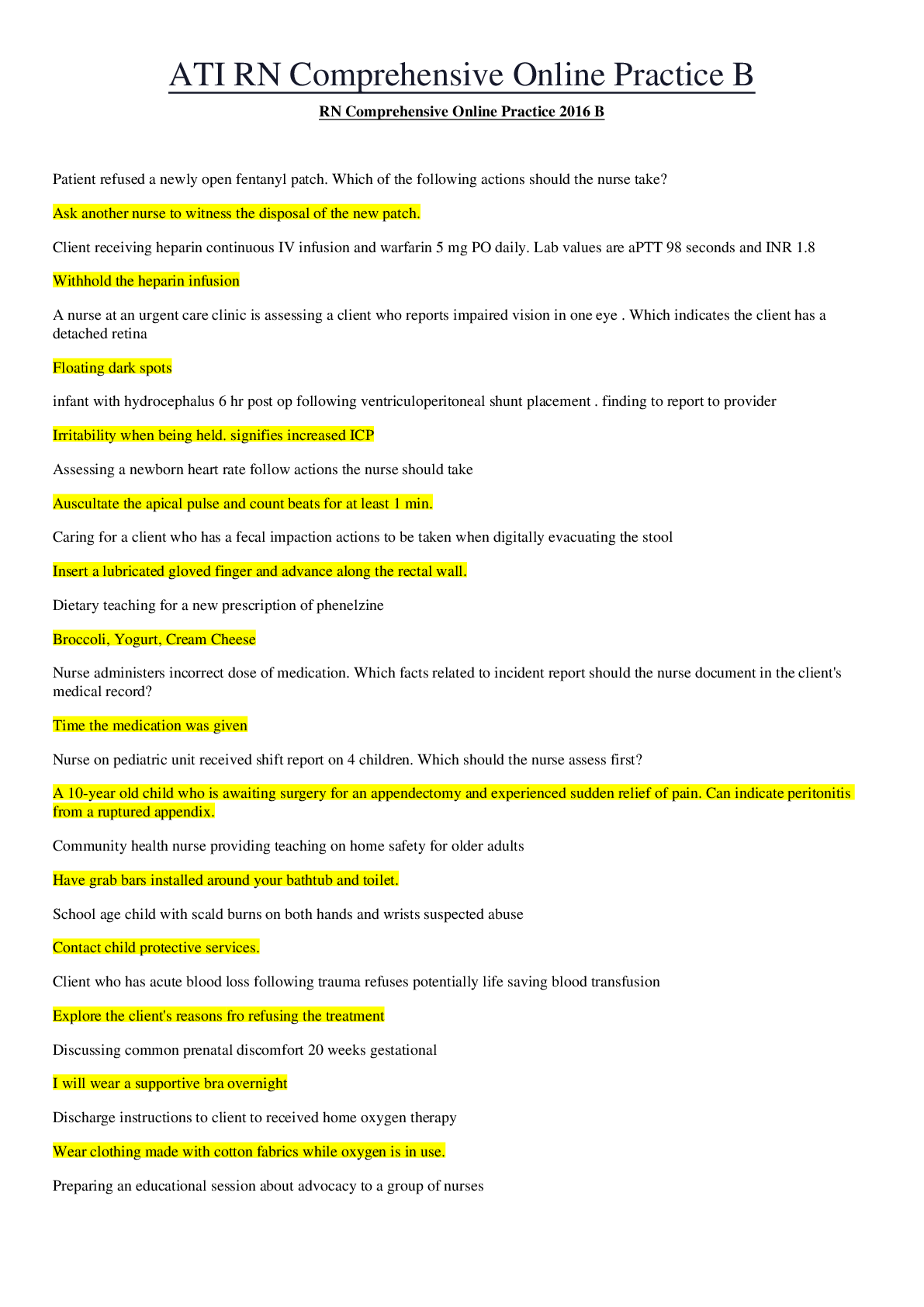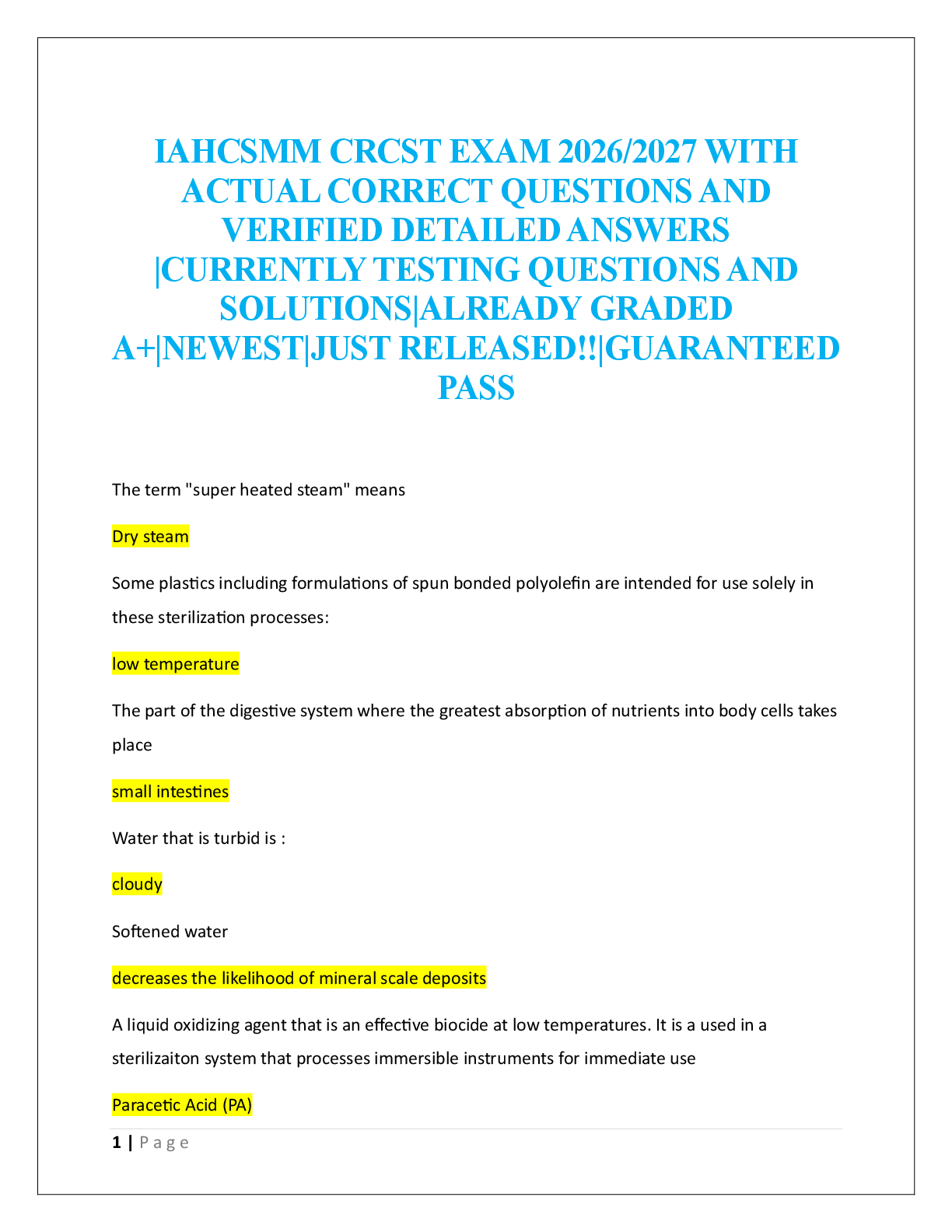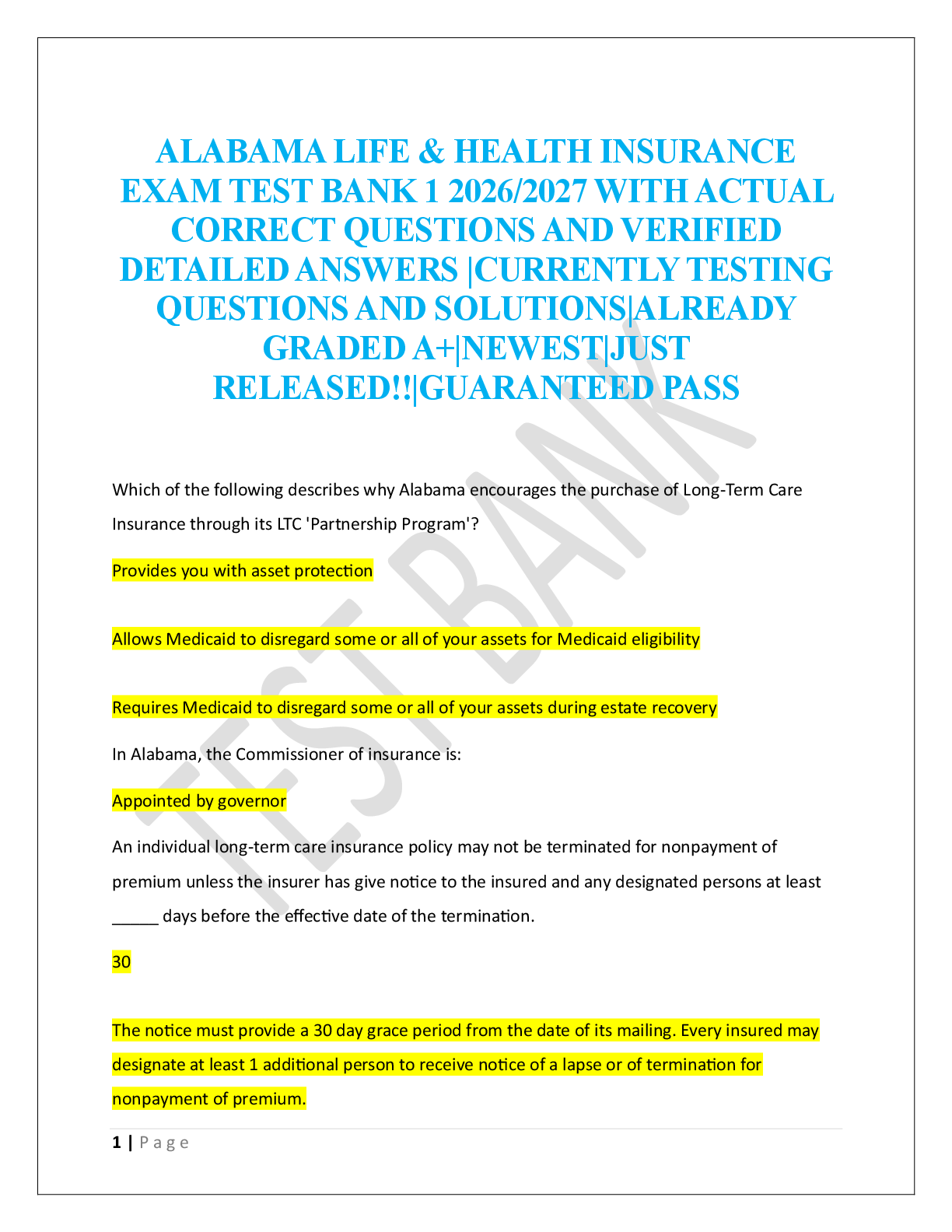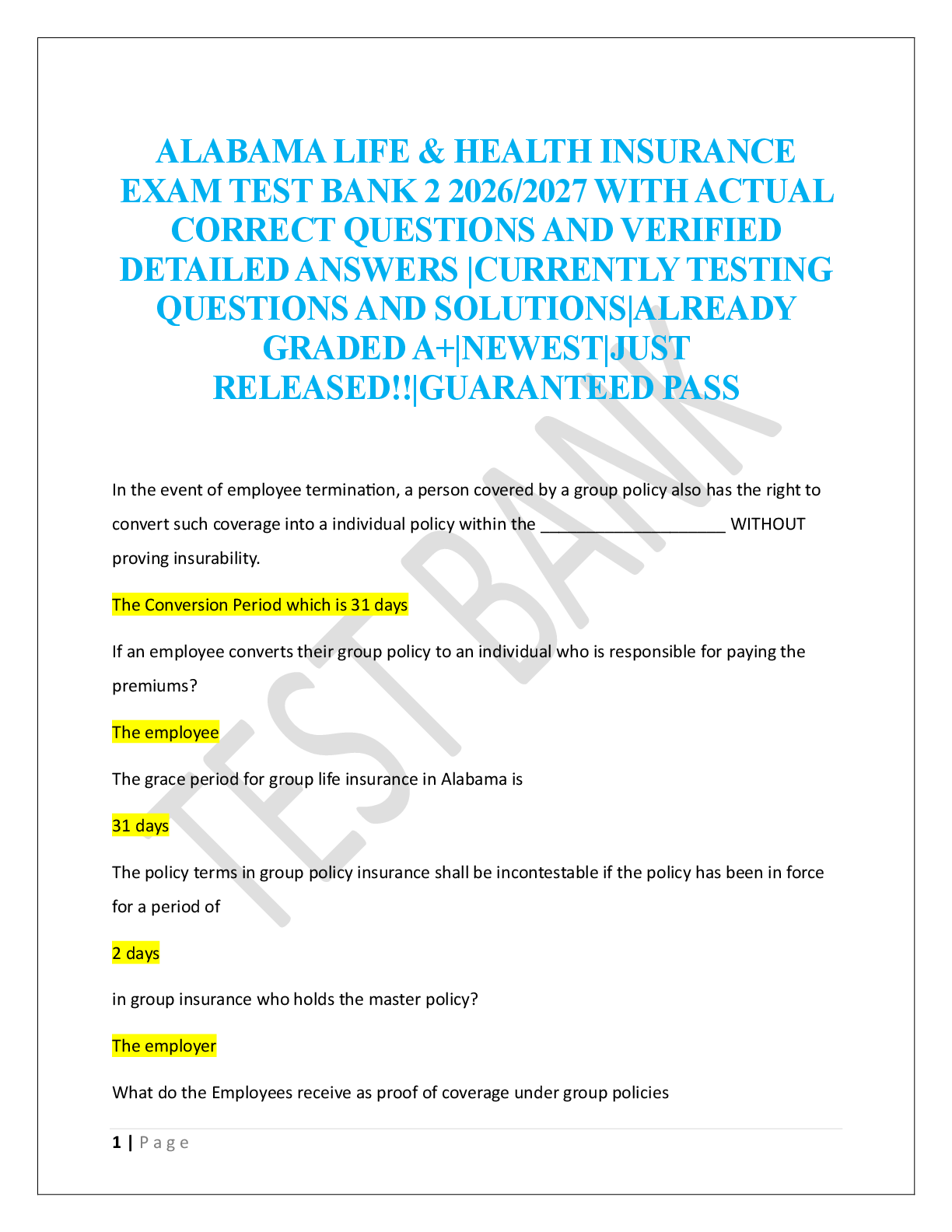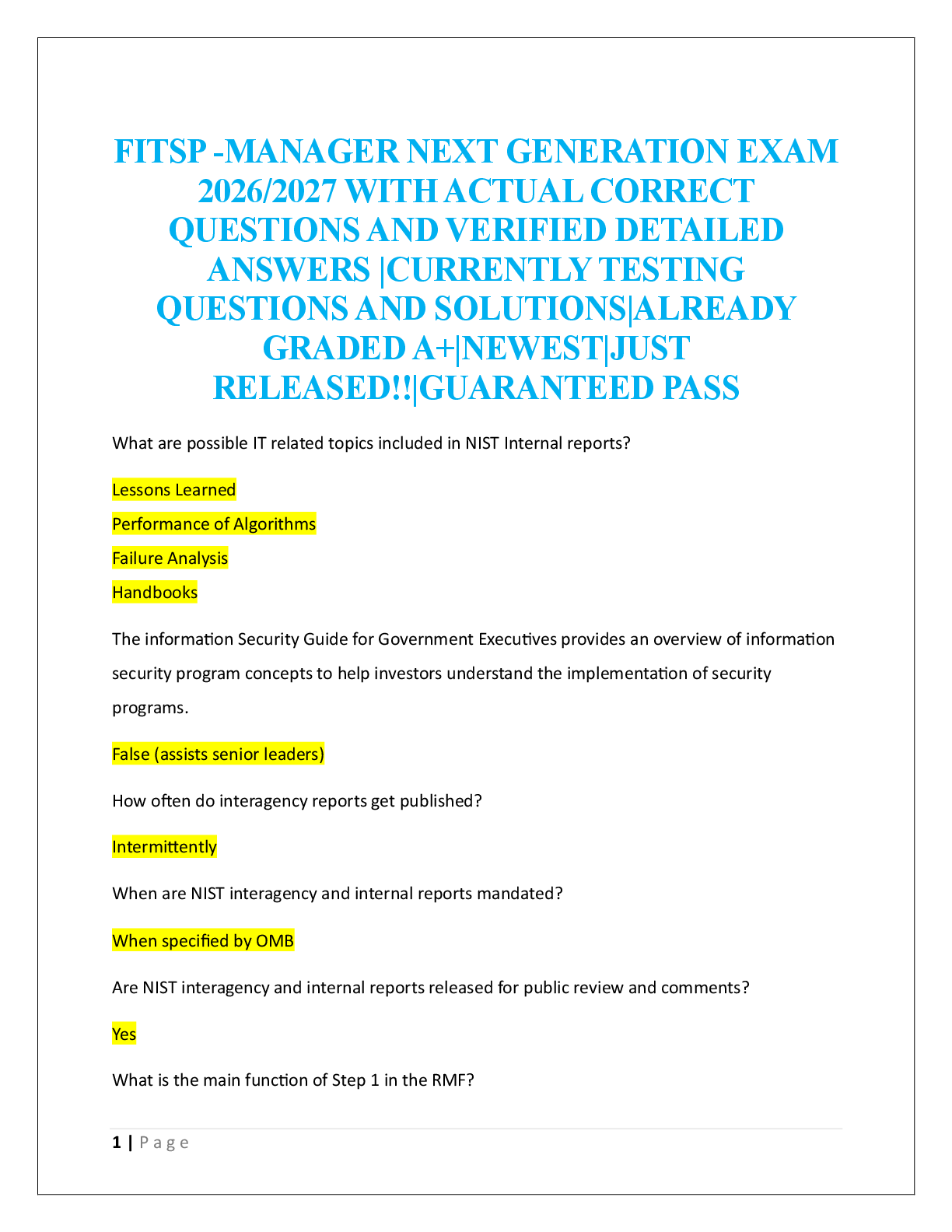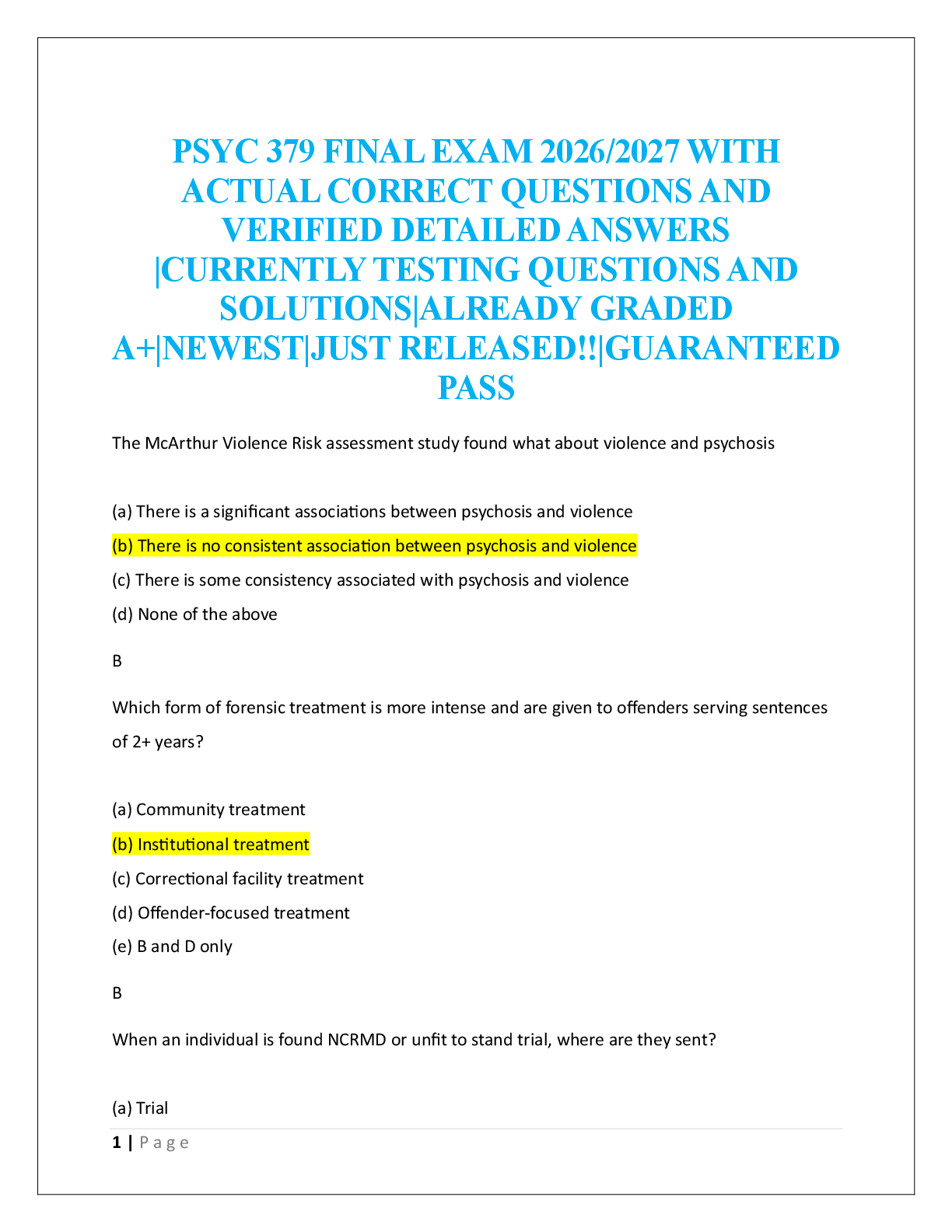Pathophysiology > EXAM > PATH 370 Pathophysiology Study Guide Chapter 33 – West Coast University | PATH370 Pathophysiology (All)
PATH 370 Pathophysiology Study Guide Chapter 33 – West Coast University | PATH370 Pathophysiology Study Guide Chapter 33
Document Content and Description Below
PATH 370 Pathophysiology Study Guide Chapter 33 – West Coast University CHAPTER 33 1. Estrogen therapy is indicated during menopause to prevent each of the following disorders except a. brea ... st cancer. b. osteoporosis. c. vaginal atrophy. d. hot flushes. 2. Endometriosis is a condition in which a. the endometrium sloughs continuously. b. ectopic endometrial tissue is present. c. an abnormal Pap smear is diagnostic. d. the endometrium proliferates and does not shed. 3. A change occurring in a pregnant woman that is indicative of a potential disorder is a. increased metabolic rate. b. 30% to 40% increase in cardiac output. c. increased oxygen consumption. d. increased urinary protein. 4. Absence of menstruation is called a. amenorrhea. b. metrorrhagia. c. menorrhagia. d. dysmenorrhea. 5. Dysfunctional uterine bleeding (DUB) is due to a. endometrial inflammation. b. reproductive tract malignancies. c. endometrial fibroid tumors. d. irregular secretion of reproductive hormones. 6. Which of the following reproductive tract disorders is most likely to be associated with urinary stress incontinence? a. Rectocele b. Menopause c. Cystocele d. Cervicitis 7. Fibrocystic breast disease a. commonly progresses to breast cancer. b. may be exacerbated by methylxanthines. c. is characterized by painless breast lumps. d. is a contraindication for progesterone birth control pills. 8. Potential risk factors for breast cancer include a. a history of fibrocystic breast disease. b. more than three pregnancies prior to age 35. c. malnourishment. d. early menarche and late first pregnancy. 9. A laboratory test result frequently associated with menopause is elevated a. estrogen. b. progesterone. c. FSH. d. hCG. 10. The hormonal changes associated with menopause increase the risk for a. diabetes. b. osteoporosis. c. thyroid disease. d. lung cancer. 11. All of the following signs and symptoms may accompany menopause except a. hot flushes. b. vaginal dryness. c. anemia. d. insomnia. 12. Heavy or prolonged menstruation b. Oligomenorrhea c. Hypomenorrhea d. Menorrhagia e. Dysmenorrhea 13. Infrequent menstrual periods a. Metrorrhagia b. Oligomenorrhea c. Hypomenorrhea d. Menorrhagia e. Dysmenorrhea 14. Extra menses between usual menstrual periods a. Metrorrhagia b. Oligomenorrhea c. Hypomenorrhea d. Menorrhagia e. Dysmenorrhea 15. Painful menstruation a. Metrorrhagia b. Oligomenorrhea c. Hypomenorrhea d. Menorrhagia e. Dysmenorrhea [Show More]
Last updated: 3 years ago
Preview 1 out of 4 pages
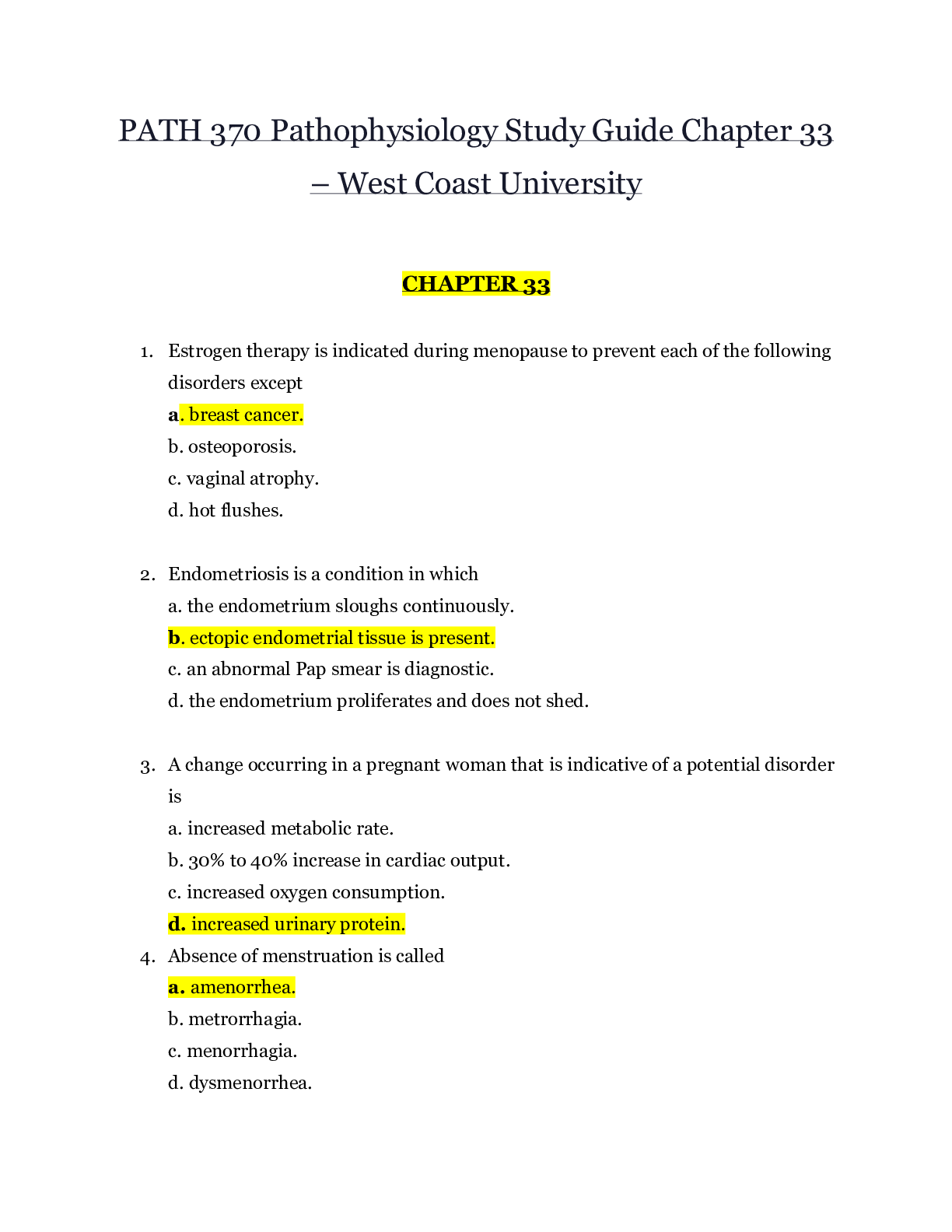
Buy this document to get the full access instantly
Instant Download Access after purchase
Buy NowInstant download
We Accept:

Reviews( 0 )
$8.50
Can't find what you want? Try our AI powered Search
Document information
Connected school, study & course
About the document
Uploaded On
Jul 26, 2020
Number of pages
4
Written in
All
Additional information
This document has been written for:
Uploaded
Jul 26, 2020
Downloads
0
Views
196








 – University of the People.png)
